What is Graphology?
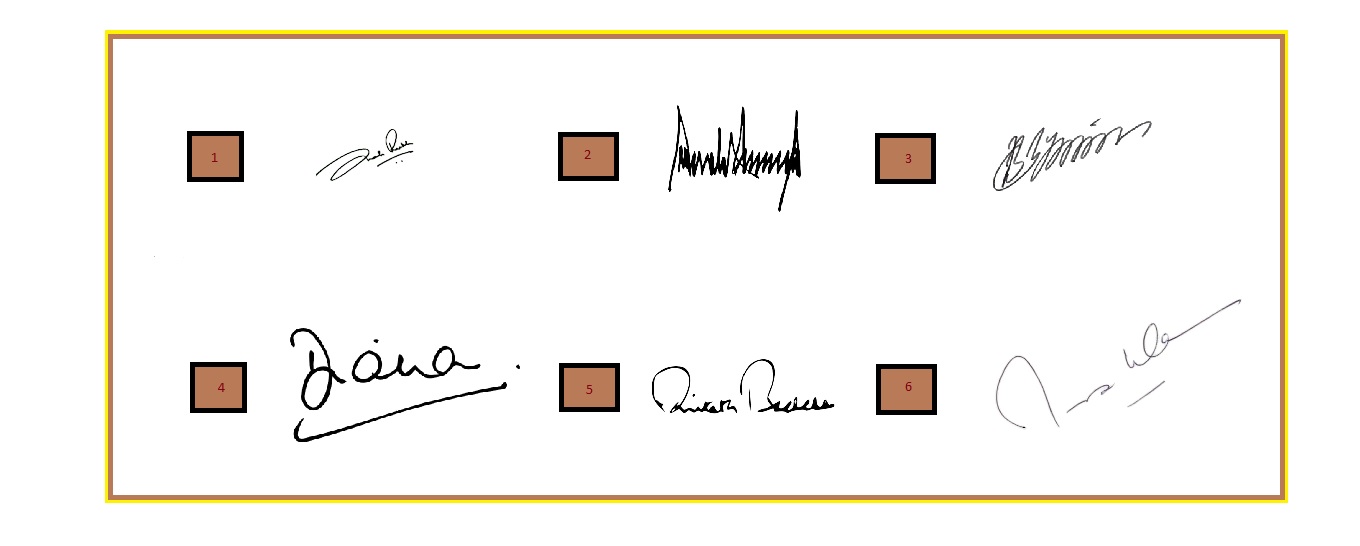
Graphology is the study of all graphic movement; it is not simply "handwriting analysis." In addition to handwriting, the graphologist studies doodles, drawings, sculptures, and paintings in order to gain insight into the physical, mental, and emotional states of the writer or artist.
Graphology and the Three Facets of Man
Graphology contends that your writing will reveal a great deal about your individual characteristics in each area:
- Physical
- Mental
- Emotional
1. Shapes of Letters

- Rounded letters indicate openness, creativity, and a more artistic nature.
- Frequent use of rounded letters suggests a stronger feminine energy.
- Sharper, angular letters suggest a more analytical and masculine quality.
2. Shapes and Positions of 'i' Dots
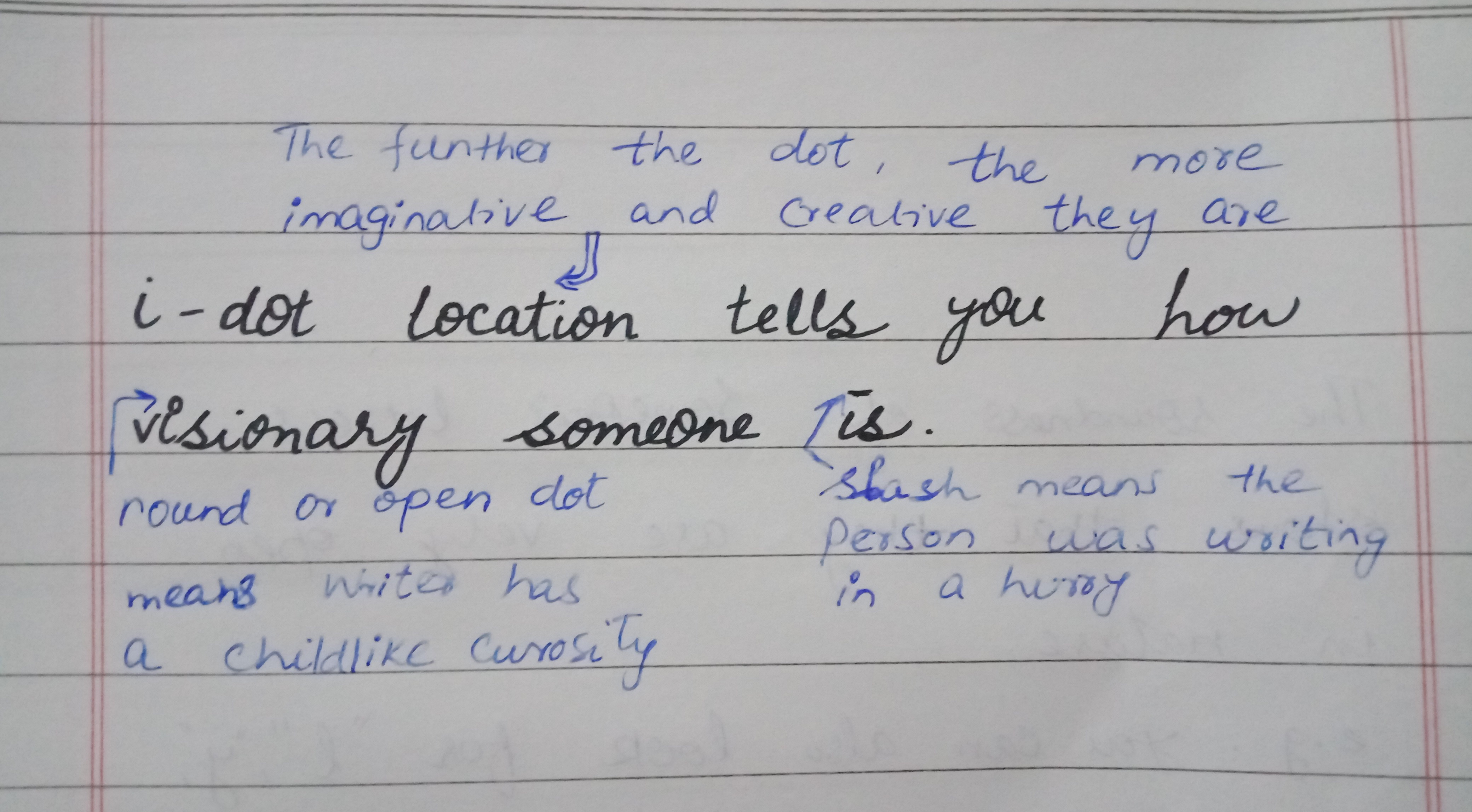
- Position and shape reveal creativity, focus, and mental clarity.
- Dot far from stem: imagination, unclear goals.
- Round dot directly above stem: curiosity and playfulness.
- Slashed dot: hurried thinking, impulsiveness.
3. Shapes and Positions of T-Bars
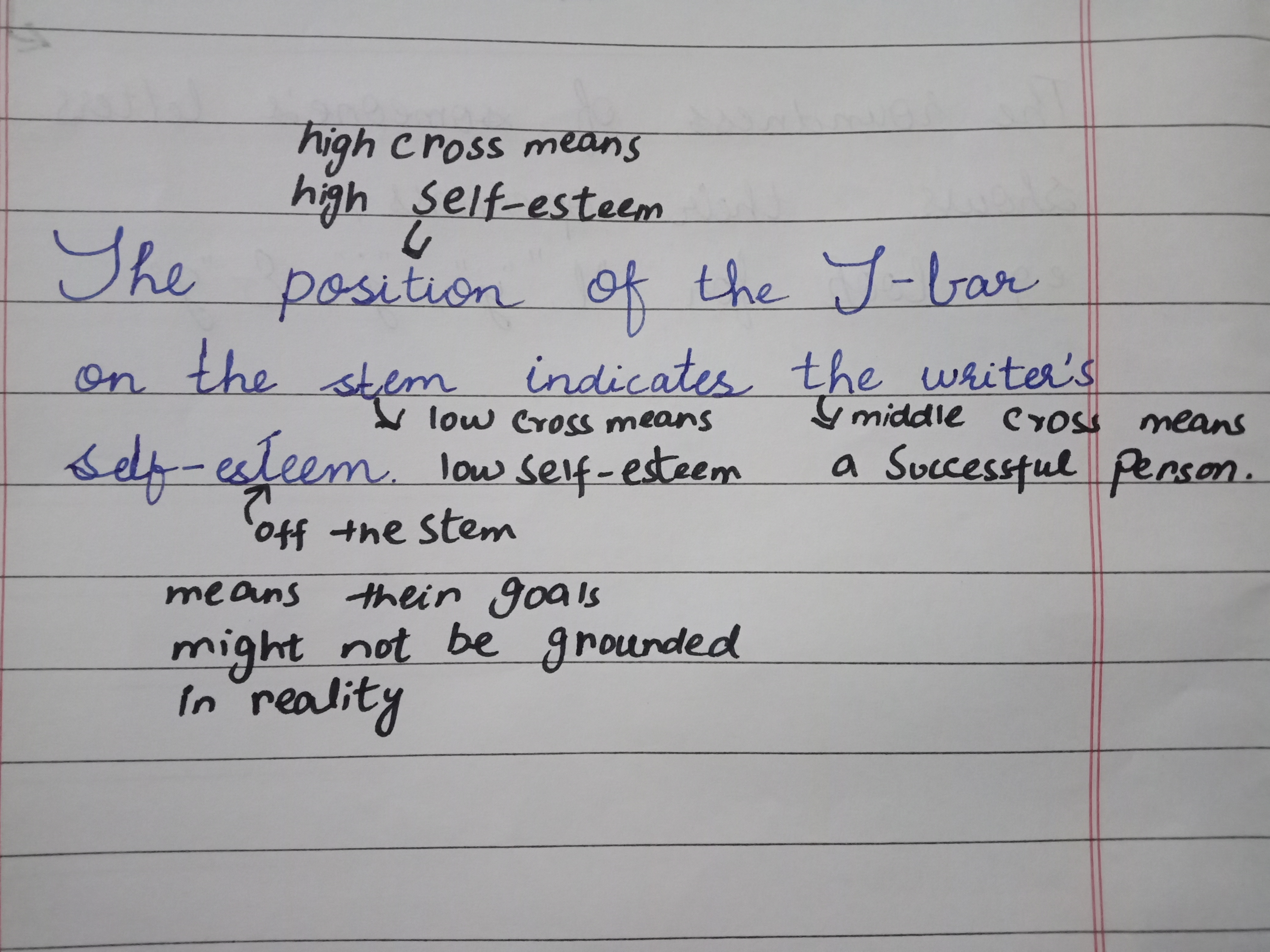
- High crossbar = high self-esteem.
- Low crossbar = low self-esteem.
- Middle crossbar = balanced self-esteem.
- Disconnected bar = fantasizing or unrealistic goals.
4. Size and Proportion of Letters
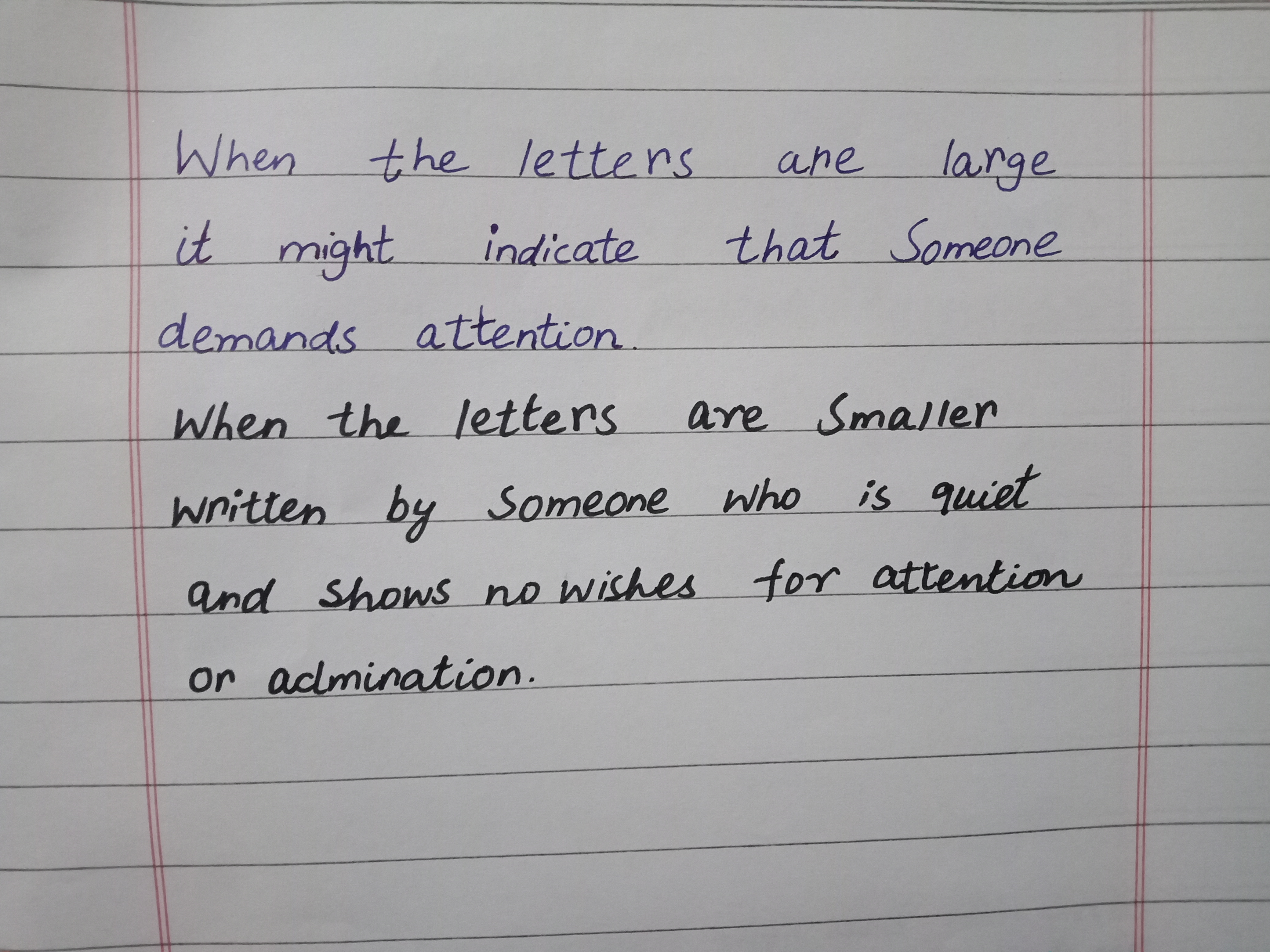
- Right slant: extroverted, emotionally expressive.
- Left slant: introverted, private, reflective.
- No slant (upright): emotionally balanced and logical.
5. Letter Slant
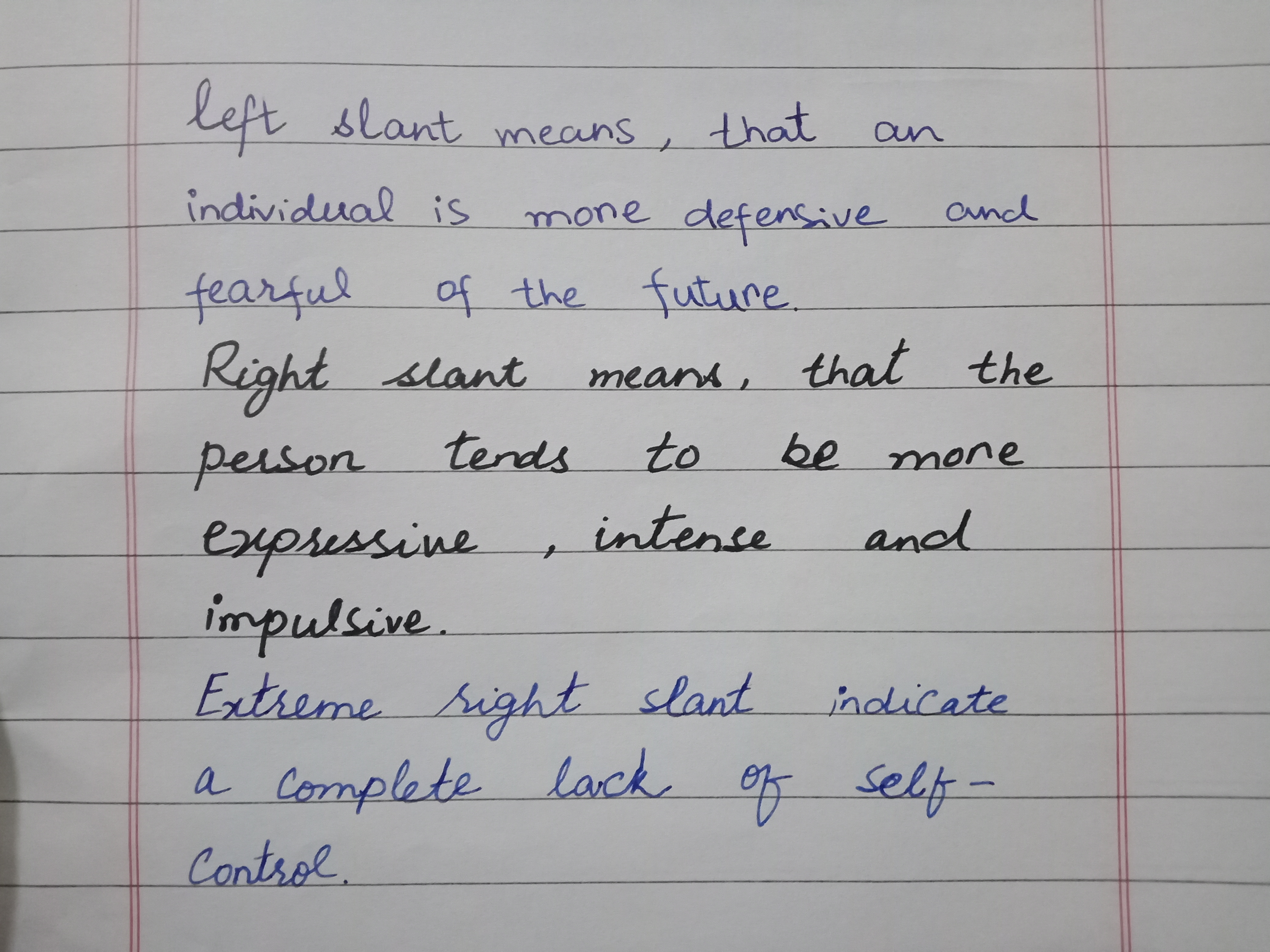
- Wide spacing: independence, open-mindedness.
- Narrow spacing: closeness to others, sometimes intrusive behavior.
6. Letter Spacing
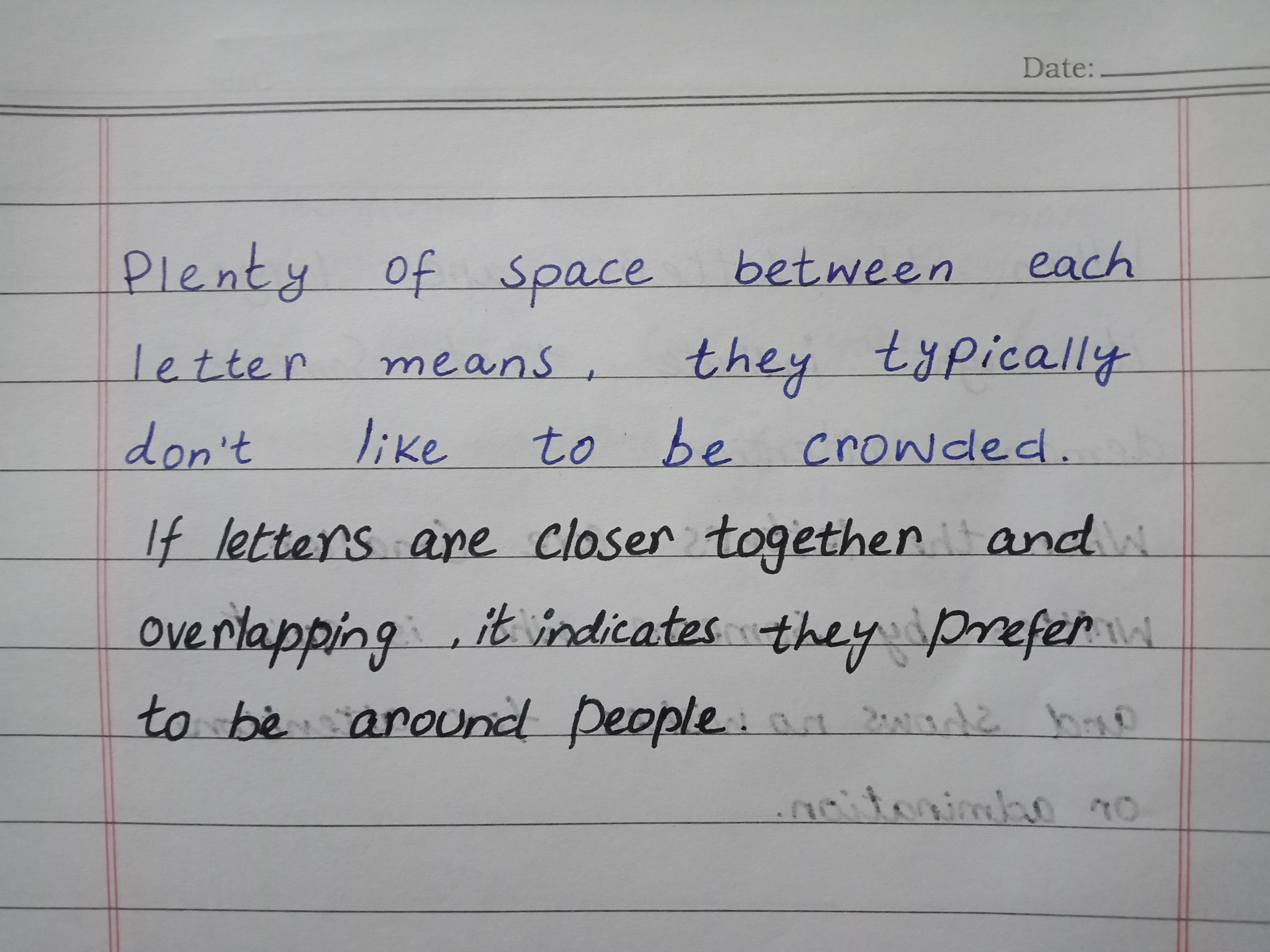
- The spacing between letters reflects a person's need for personal space.
- Wide spacing: need for personal space and boundaries.
- Narrow spacing: sociability, desire for companionship.
7. Word Spacing
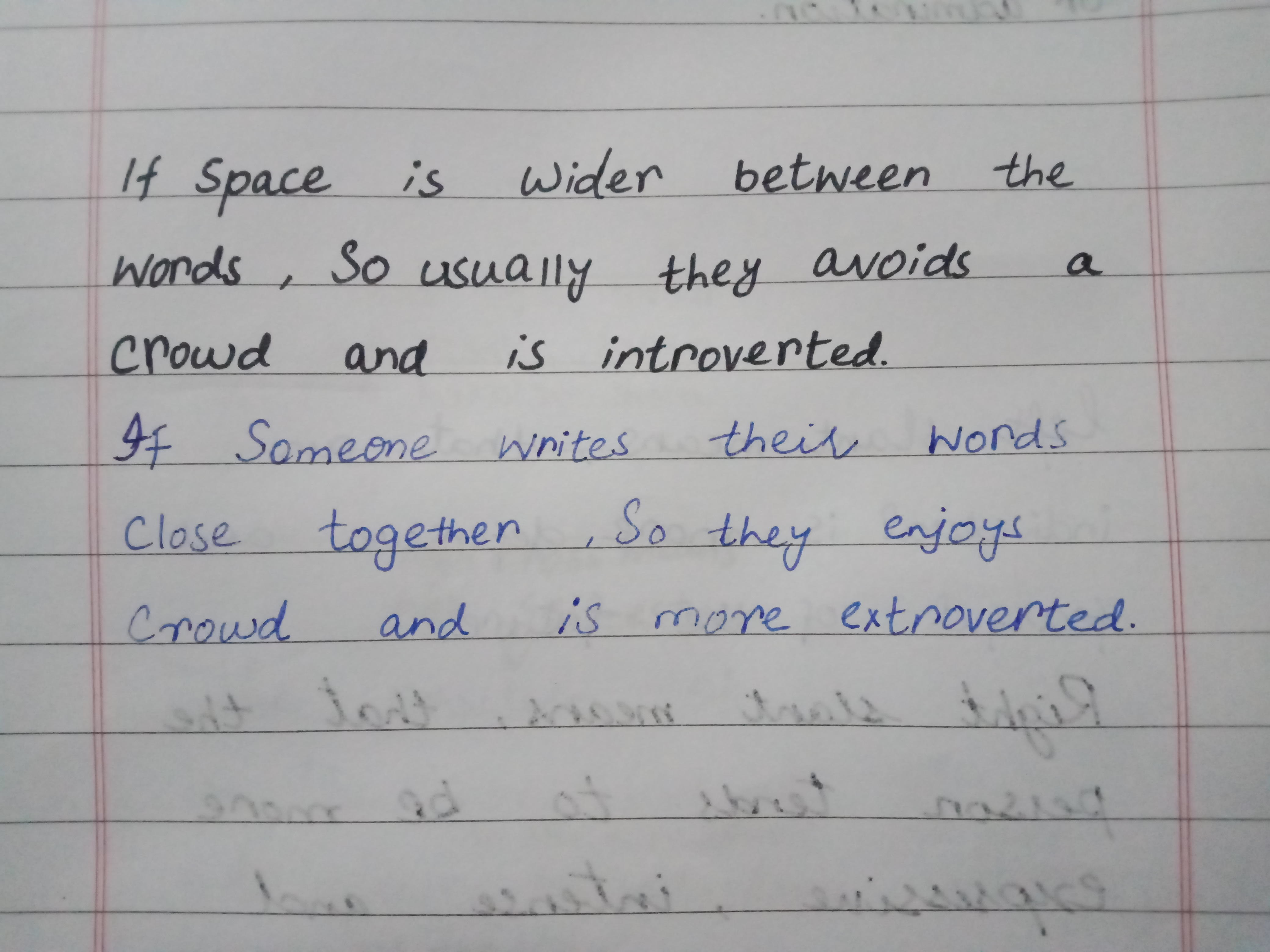
- Left margin: your past and relationship with parents.
- Right margin: your future and openness to new experiences.
- Top margin: respect for authority and aspiration.
- Bottom margin: instincts, physical space, comfort zone.
8. Line Spacing
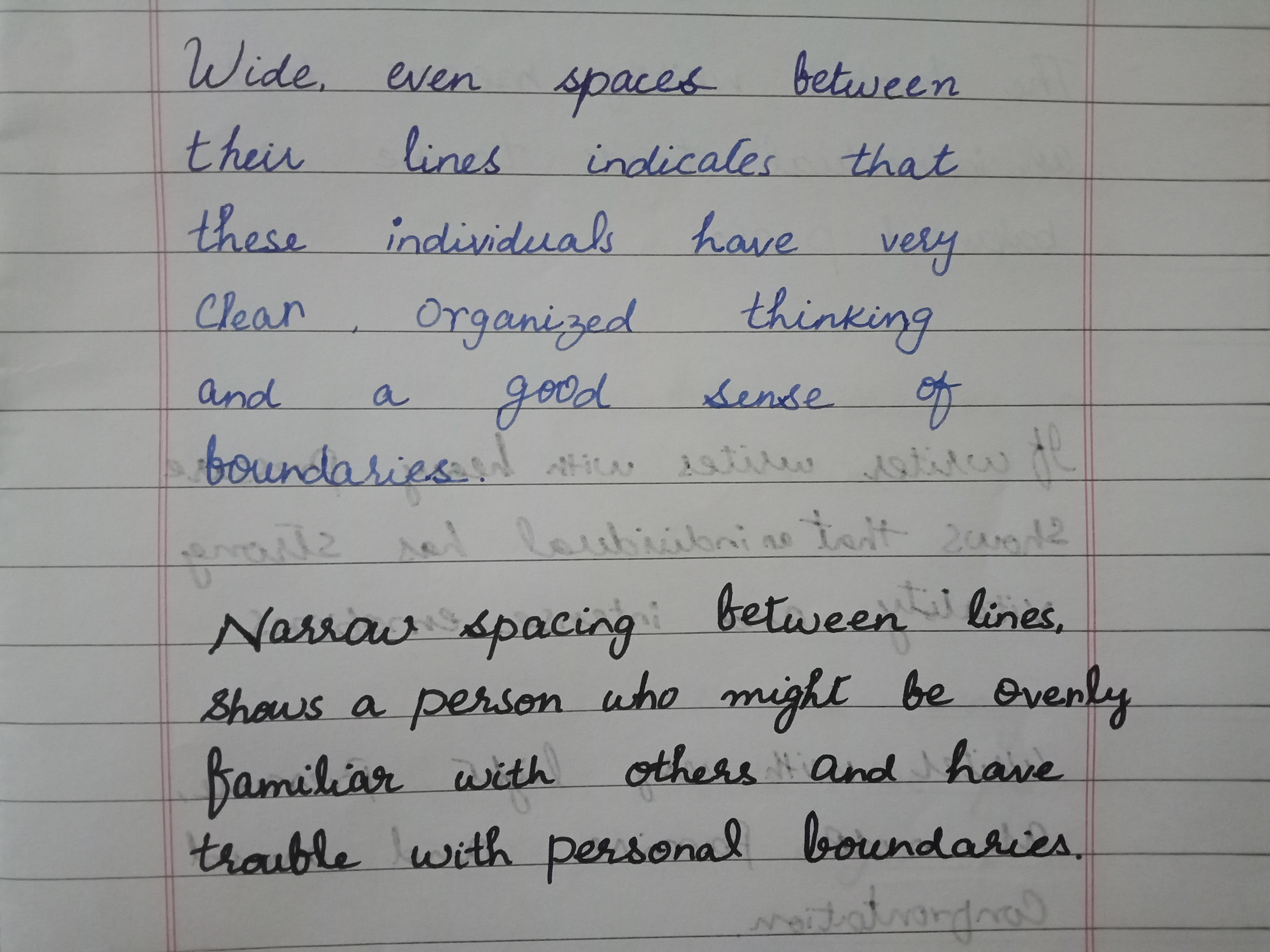
- Large letters: confidence, extroversion, attention-seeking.
- Small letters: focus, concentration, introversion.
- Average size: adaptability, realism, balanced nature.
9. Slope in Letters

- Heavy pressure: high energy, intense emotions, determination.
- Light pressure: sensitivity, low energy, adaptability.
10. Pressure of Pen or Pencil
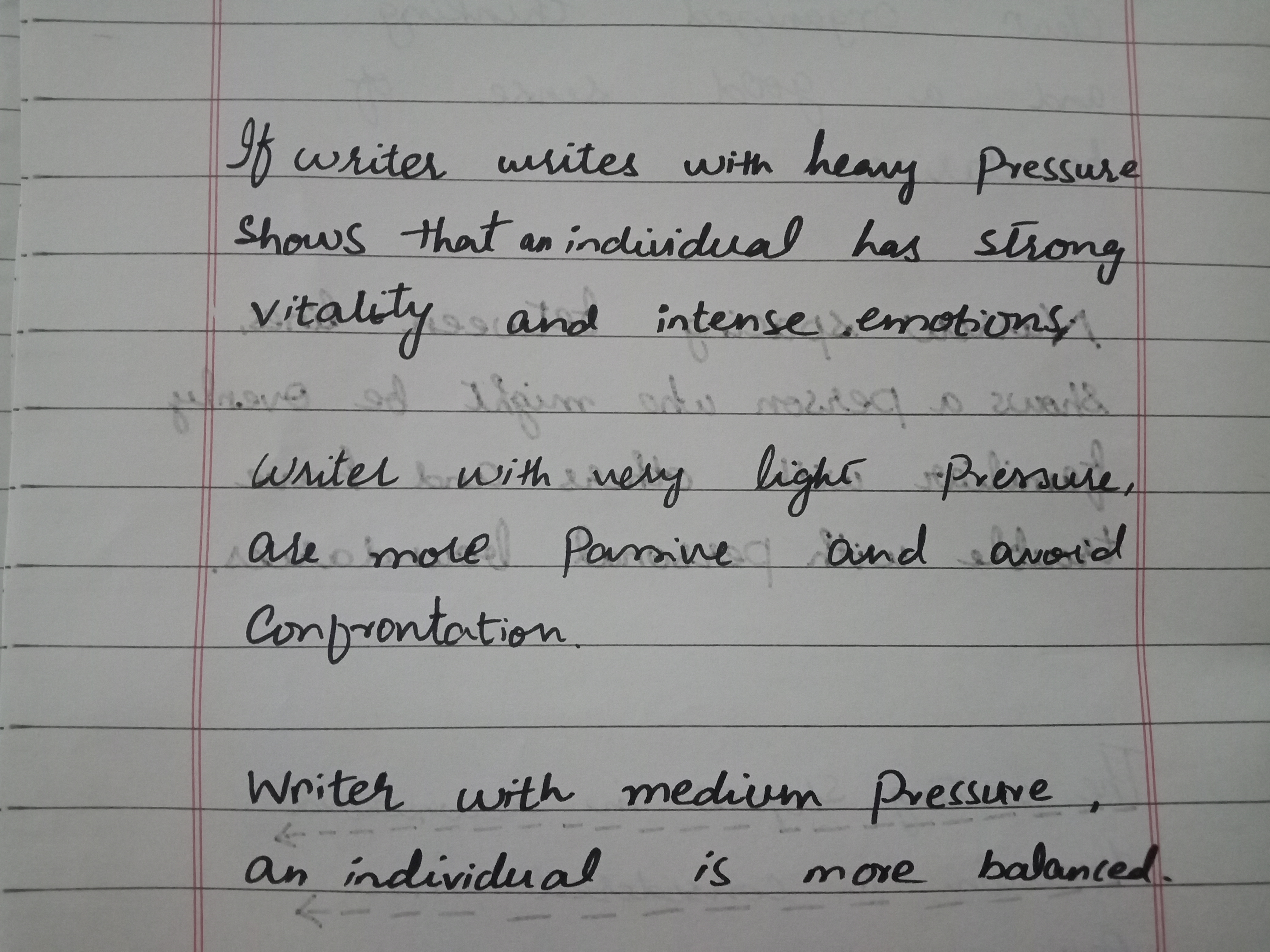
- Straight baseline: stability, emotional control.
- Ascending baseline: optimism, ambition.
- Descending baseline: fatigue, discouragement.
- Wavy or erratic: mood swings, emotional instability.
11. Margins in Handwriting
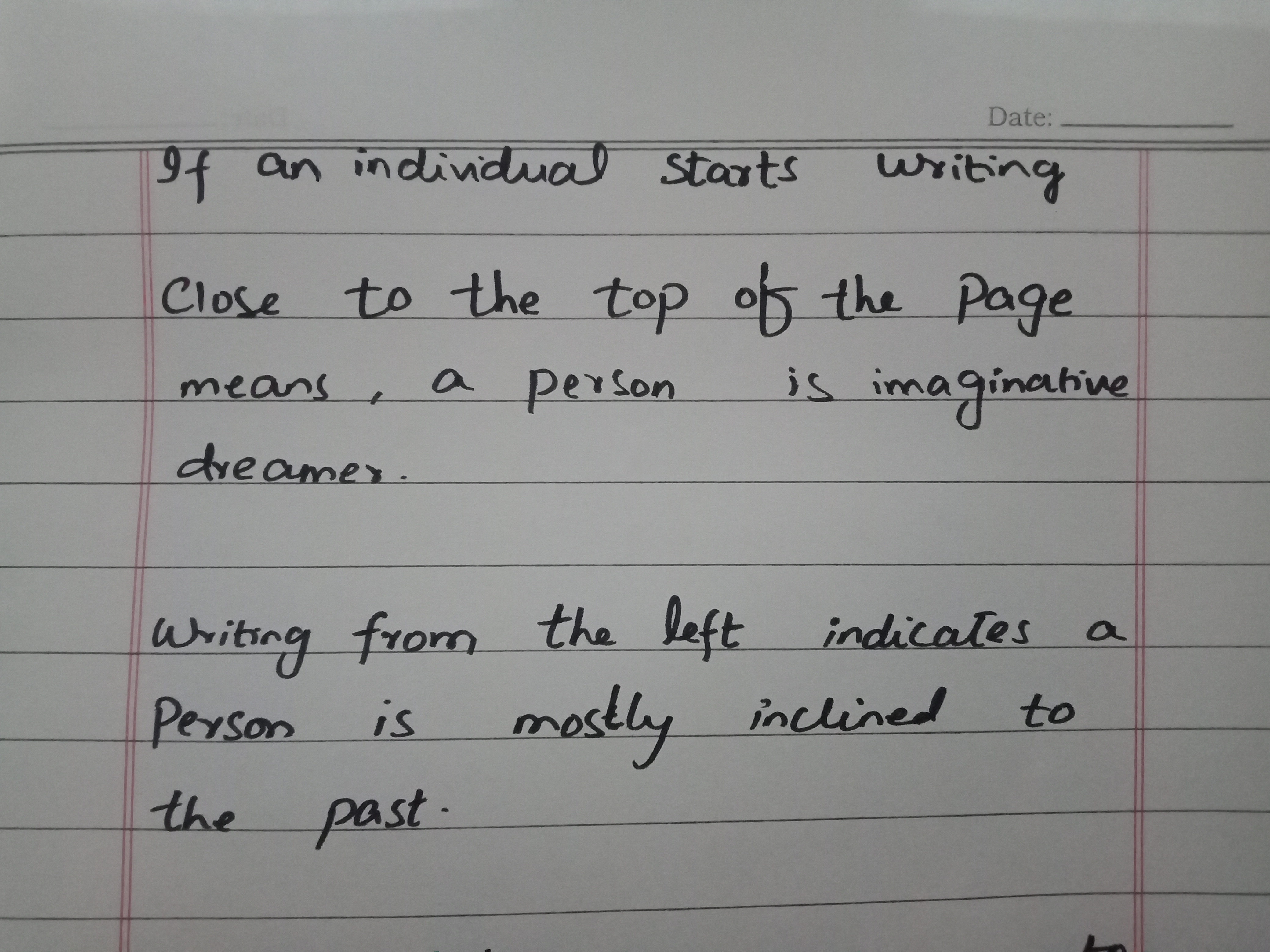
- The way margins are used in handwriting reflects a person’s time orientation.
- Writing close to the left margin suggests a person is rooted in the past.
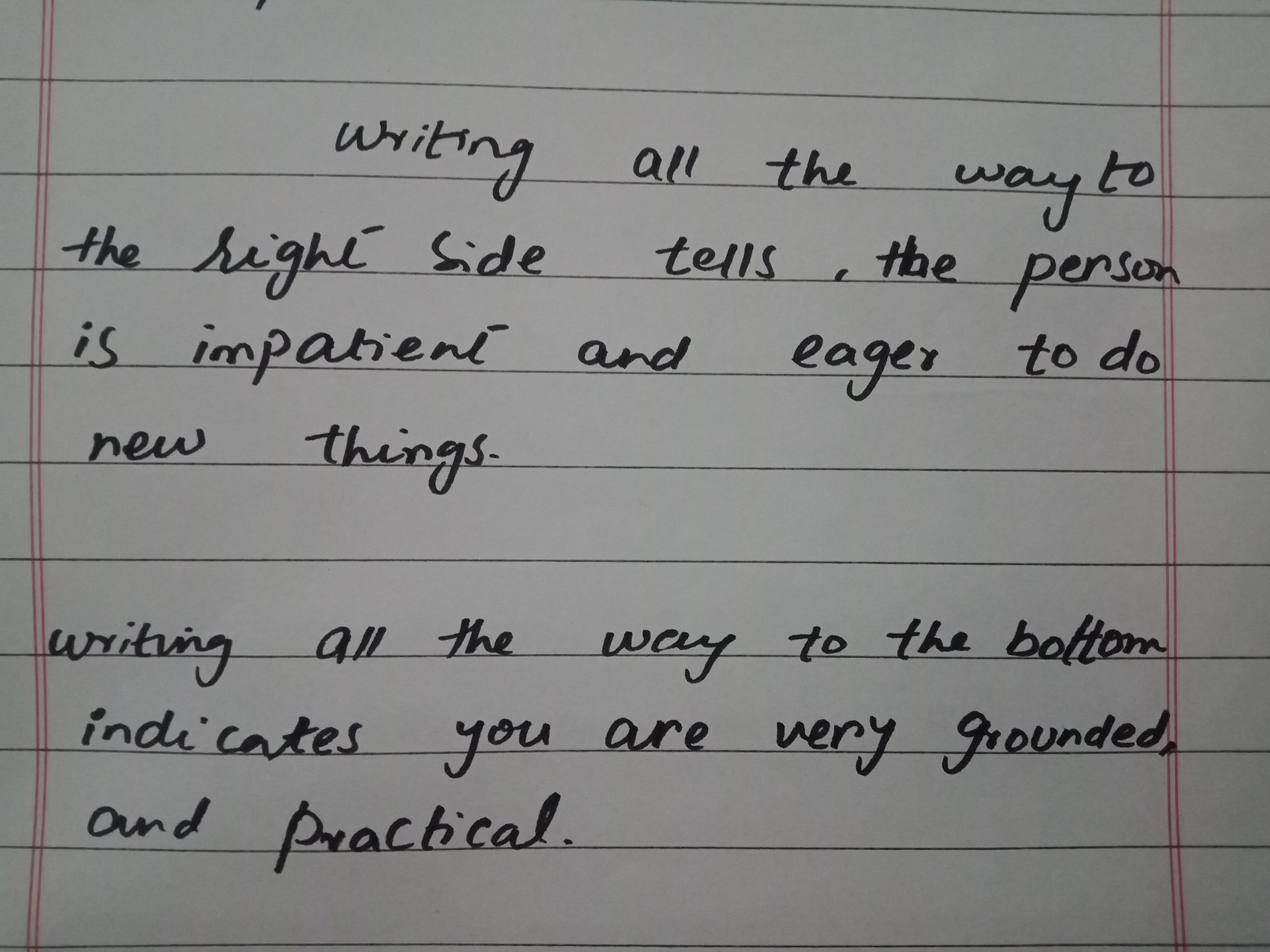
- Writing close to the right margin suggests eagerness, impatience, and a forward-looking attitude.
- Writing near the top of the page indicates imagination and dreaminess.
- Writing near the bottom of the page reflects practicality and a grounded personality.
📚 Related Articles:
- Graphology, or handwriting analysis, is a powerful tool for exploring personality traits, subconscious patterns, and emotional states. When paired with personality assessments, it can offer a multi-dimensional understanding of one’s inner world. Many counselling psychologists use handwriting analysis to uncover hidden emotional blocks and behavioral tendencies.
- By combining graphology with numerology, individuals can gain insights into how written expression aligns with their life path and energy numbers. Similarly, incorporating self-development techniques allows for conscious improvements in one’s handwriting and mindset.
- There’s a deep connection between palmistry and graphology—both help in revealing subconscious traits through physical patterns. You can even analyze both handwriting and facial features to get a fuller picture of someone’s personality.
- For those exploring career direction, pairing graphology with our career assessment test can provide clarity on strengths and preferred work styles. In therapeutic settings, the evolution of handwriting can reflect progress in behavioral therapy
- To deepen your practice, explore related disciplines like Feng Shui, which also deals with energy balance and flow. Finally, get inspired by curated psychology quotes that reflect the power of self-expression and identity through writing.

